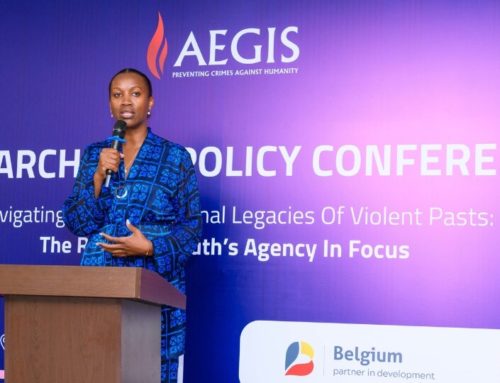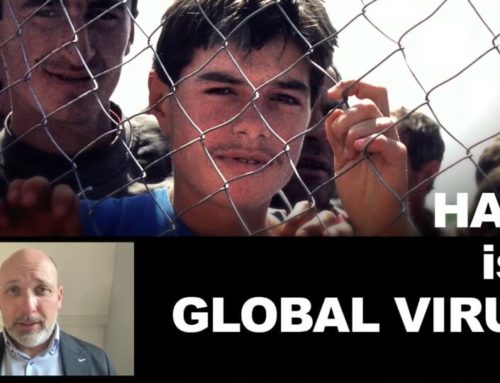Comment by Dr James Smith, CEO Aegis Trust, 21 Aug 07 – The British Advertising Standards Authority (ASA) recently ruled on a complaint against the Save Darfur Coalition and Aegis Trust regarding how the death toll in Darfur has been represented. ASA identified a ‘division of informed opinion’ on the mortality in Darfur and stated that the figure of 400,000 deaths should not have been used without qualification. Had even the wording been ‘up to 400,000 have died as a result of the violence in Darfur,’ there would have been little argument.
Some commentators however have misinterpreted the ASA ruling. One said that the ASA ruled that Save Darfur and Aegis breached standards of truthfulness; another that the ASA stated they exaggerated. The ASA did neither. It ruled that campaigners should be clear about the difference of opinion over the number of people murdered in Darfur – that either a range should be cited or the source of the figure referenced.
The complaint was brought by the European Sudanese Public Affairs Council The Sudanese Government says that only 9,000 people have been killed. But the best that the pro-Khartoum ESPAC could do to minimise the figures was to present the ASA with studies putting the figure nearer 200,000. Journalists who have tried to visit Darfur understand the constraints. The regime in Khartoum blocks people from travelling to count the dead. Extrapolating available data leads to less accurate estimates. Aegis acknowledges, as does the ASA, that this gives rise to a range of possible mortality figures with 400,000 at its upper end. Aegis has most commonly used a lower range in its briefings but is relaxed about using the upper figure in communications, given the strong arguments made by distinguished experts who arrived at that figure. These arguments include that the estimates cover only part of the period of the conflict, that whole families were killed leaving no witnesses to speak to researchers and that nobody knows how many people died in the hard to reach areas of Darfur . (For consideration of these points in more detail, see Eric Reeves. The ASA based its ruling on a 2006 U.S. Government Accountability Office(GAO) review of published reports. Not taken into account, due its more recent publication, was the only peer-reviewed scientific estimate on Darfur mortality since the GAO review. It was co-authored by Prof. Hagan and published in the reputed Science journal in September 2006. This was no finger-in-the-air estimate. Prof. Hagan agrees that 400,000 could be at the upper end of the range (Nicholas Kristof expanded on this in a piece on 14 August – see http://www.miafarrow.org/). While a futile debate has been ignited about the dead, we are distracted from the fate of the living. So there is merit in considering some other numbers. As of April 2007, 2.1 million people have fled their burning villages to wretched camps across Darfur and Eastern Chad. This is the highest figure since the conflict began – 340,000 more than in April 2006. Moreover, in total, the World Food Programme is currently providing food assistance to 4.2 million conflict-affected civilians in Darfur. These staggering figures, provided by the UN, are much more reliable than the death toll figures, because it is easier to count people registered in camps or receiving food than the silenced dead scattered across a war zone. It is also important to remember that even a low mortality rate in Darfur today, being quoted by commentators, can offer no reassurance during a genocidal conflict. Consider Rwanda prior to the 1994 genocide. In the first three months of 1994 a civil conflict with an uneasy peace process was entering its fourth year. Near normal mortality rates gave no indication that in the second quarter of 1994, around a million Rwandans would be slaughtered. In April civilians were being killed with machetes in Rwanda at a rate several times greater than the Nazi death camps. My wife’s mother was among the victims. Shamefully, aside from fruitless discussions about whether to call it genocide, journalists were fixated on numbers of dead rather than protection for the living. I recall the words of the head of the Red Cross in Rwanda, Phillipe Gaillard: “the BBC in London called us in Kigali and asked us what our estimate of the number of people killed was. We said at least 250,000. One week later they called again. We said at least 500,000.” The following week, the same question. Gaillard said: “After half a million sir, we stopped counting.” Preventing genocide often involves asking public and politicians to imagine the unimaginable. In attempting to do this we set ourselves a trap by focussing on numbers that others may only be eager to exploit in order to distract from solving a human crisis. Joseph Stalin famously knew this: ‘One death is a tragedy; a million is a statistic’. We would do better to spend less time bickering about numbers and more time listening to the people under threat who remind us that genocide isn’t just a statistic. It is individual and personal; one murder after another. I remember meeting thirteen-year-old Halima in July 2004 in a camp on the Chad-Darfur border. She cared not about the thousands of victims, but grieves for her twin brother who she saw shot in the head as they fled their village. While we must do our best to responsibly count those who suffer and die, numbers are not the only way to catalogue atrocities or understand our obligation to address them. The people of Darfur are still in grave peril. Despite UN resolution 1769 authorising 26,000 peacekeepers to protect civilians, people are still being killed and displaced, and security is deteriorating daily. Campaigners around the world helped make promises of protection. With more than 4 million people in Darfur in a fragile existence, we should not be distracted by a number game while world leaders need holding to those promises.





